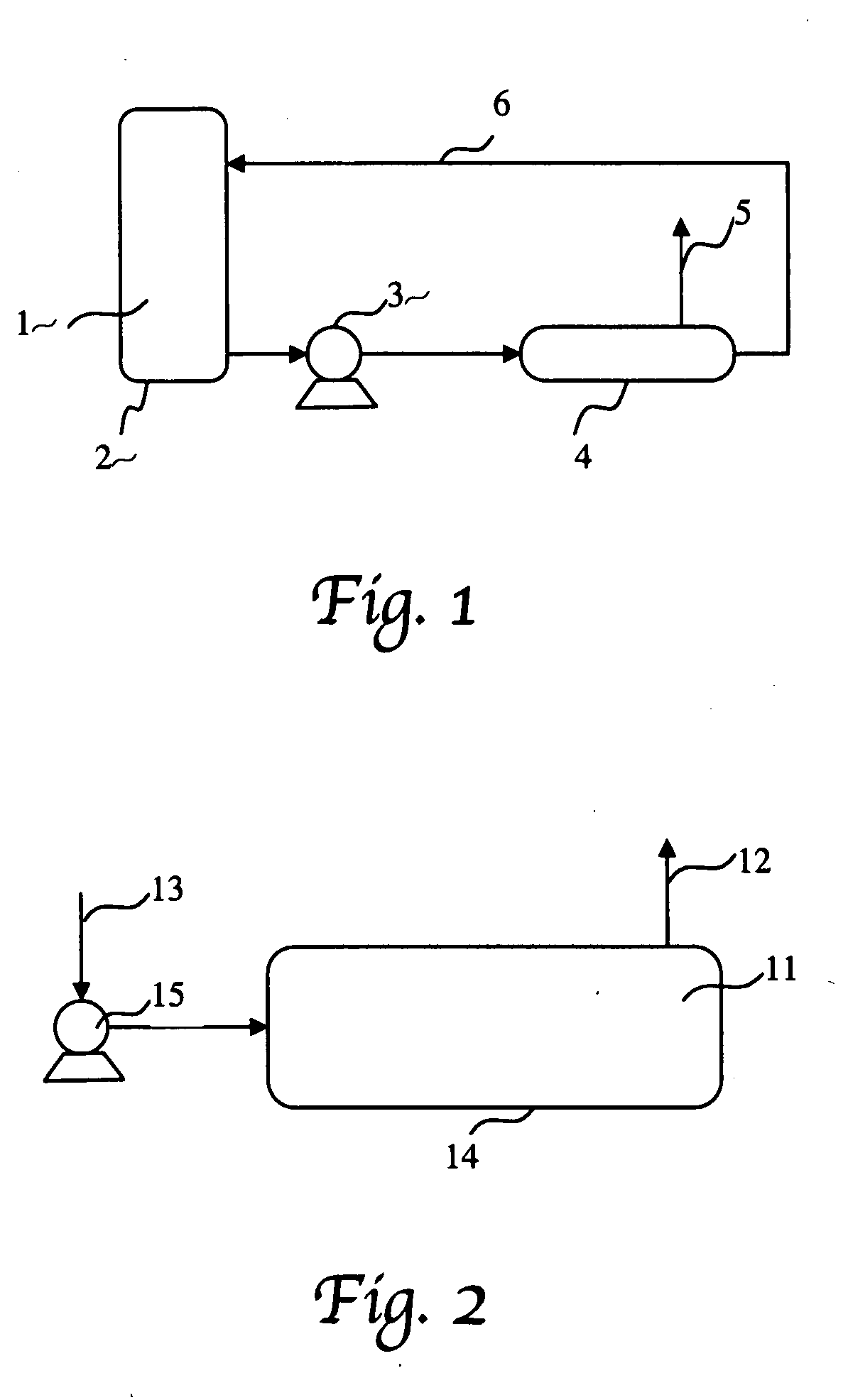Composite fuels for hydrogen generation
a technology of composite fuels and hydrogen, which is applied in the direction of fuels, electrochemical generators, other chemical processes, etc., can solve the problems of reducing the realization of hydrogen economy, methanol fuel also decomposing into carbon monoxide, reaction taking more thermal energy, etc., and achieves high gravimetric and volumetric energy density, high hydrogen content, and reduced complexity and cost.
- Summary
- Abstract
- Description
- Claims
- Application Information
AI Technical Summary
Benefits of technology
Problems solved by technology
Method used
Image
Examples
example 1
[0055] 2 moles of sodium hydroxide were added to purified water to make a 45 wt % NaOH solution. 1 mole of ethylene glycol was then added to the solution to make a composite fuel for hydrogen generation. 0.5 mole of sodium borohydride was slowly added to the alkaline solution. The obtained composite fuel is a clear solution.
[0056] This solution is very stable over a wide range of climatic conditions. The fuel cartridge withstood the temperature of a freezer without freezing. The thermal stability of the composite fuel at high temperature was tested in a Teflon container with a heating element. No gas evolving from the solution was observed or measured. The test result of stability of the fuel at high temperature is shown in FIG. 3, line a. This shows that the fuel is stable up to 125° C.
[0057] With the same setup but in the presence of carbon supported Pt—Ru catalysts, hydrogen generation is observed and measured. The hydrogen generation rate using this fuel was measured at differ...
example 2
[0060] By pumping the same composite fuel as in Example 1 into a preheated adiabatic catalytic processor at 150° C. as illustrated in FIG. 1, the hydrogen generation starts once the fuel contacts the catalysts, and the temperature of the processor can be maintained constant during hydrogen generation even with no extra heat input.
example 3
[0061] 80 grams of sodium borohydride powder, 80 grams of sodium hydroxide and 5 grams carbon supported Ni, Co and Fe catalyst are well mixed together under a nitrogen atmosphere. Then 62 grams of ethylene glycol is slowly added to the mixture prepared above, and a paste form of composite fuel is formed. The paste is then laminated between 7-mil high porous polyethylene sheets and becomes a pellet. Multiple laminated fuel pellets are packed together into a plastic container. When water is fed into the container, hydrogen is produced. The generation rate of hydrogen is controlled by the feed rate of water.
PUM
| Property | Measurement | Unit |
|---|---|---|
| temperature | aaaaa | aaaaa |
| temperature | aaaaa | aaaaa |
| temperatures | aaaaa | aaaaa |
Abstract
Description
Claims
Application Information
 Login to View More
Login to View More - Generate Ideas
- Intellectual Property
- Life Sciences
- Materials
- Tech Scout
- Unparalleled Data Quality
- Higher Quality Content
- 60% Fewer Hallucinations
Browse by: Latest US Patents, China's latest patents, Technical Efficacy Thesaurus, Application Domain, Technology Topic, Popular Technical Reports.
© 2025 PatSnap. All rights reserved.Legal|Privacy policy|Modern Slavery Act Transparency Statement|Sitemap|About US| Contact US: help@patsnap.com



